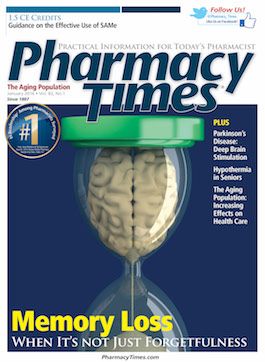Publication
Article
Pharmacy Times
Case Studies (January 2016)
Author(s):
What should these pharmacists do?
CASE 1
A young mother comes to your pharmacy with her 3-yearold son, DT, who has been rubbing and tugging at his right ear and appears to be in discomfort. His physician gave him a diagnosis of acute otitis media. DT’s mother presents you with a prescription for amoxicillin 600 mg oral suspension twice daily for 7 days. While viewing DT’s patient profile, you notice that he has an allergy to penicillin. When you question the nature of his allergy, the mother describes a severe case of hives that resulted in an emergency department visit. DT is otherwise healthy, with no other known drug allergies.
As the pharmacist, would you fill DT’s prescription for amoxicillin? What else could you recommend?
CASE 2
KM, a 40-year-old man, comes to your pharmacy having been given a diagnosis of Helicobacter pylori-induced peptic ulcer disease. He hands you prescriptions for azithromycin 250 mg twice daily, amoxicillin 1000 mg twice daily, and omeprazole 20 mg twice daily, each to be taken for 10 days, followed by an additional 18 days of omeprazole 20 mg. He has no comorbid conditions or known drug allergies.
As the pharmacist, is this an appropriate drug regimen? If not, what changes would you recommend?
ANSWERS
Case 1: Acute otitis media (AOM) is a very common infection of the middle ear, especially in young children. According to guidelines from the American Academy of Pediatrics (AAP), first-line antibiotic treatment for AOM is high-dose amoxicillin (80-90 mg/kg/d in 2 divided doses; a 7-day course for children aged 2 to 5 years). However, in the case of a hypersensitivity reaction to penicillin, the preferred alternative therapeutic options are certain second- and third-generation oral cephalosporins, which have been identified as highly unlikely to be associated with cross-reactivity with penicillin allergy. The 3 oral medications designated for this purpose by the AAP guidelines are cefdinir (14 mg/kg/day in 1 or 2 doses), cefuroxime (30 mg/kg/day in 2 divided doses), and cefpodoxime (10 mg/kg/day in 2 divided doses); the usual course of therapy is 7 to 10 days for medications. The pharmacist should call DT’s pediatrician and recommend a change of antibiotic to one of the 3 noted above. DT’s mother should also be reminded to shake the bottle well before measuring.
Case 2: Peptic ulcer disease (PUD) has 3 main etiologies: the use of nonsteroidal antiinflammatory drugs, the presence of H pylori, and stress. Each has its own distinct set of pharmacologic and nonpharmacologic therapies. In the case of KM’s H pylorirelated PUD, the guidelines established by the American College of Gastroenterology recommend a proton pump inhibitor (PPI)-based triple drug regimen. This regimen includes a standard dose of a PPI twice daily (esomeprazole is the exception and should only be dosed once daily), clarithromycin 500 mg twice daily, and amoxicillin 1000 mg twice daily—all for 10 to 14 days. If an active ulcer exists at the initiation of therapy, an additional 18 days of once-daily PPI use is recommended. In the case of KM, the prescriber substituted azithromycin, a different macrolide antibiotic, for clarithromycin. The guidelines clearly state that azithromycin and erythromycin should not be substituted for clarithromycin, as evidence shows that clarithromycin is the most effective antibiotic in the treatment of PUD. KM’s prescriber should be contacted to change the azithromycin to clarithromycin. If KM had a penicillin allergy on file, metronidazole 500 mg twice daily would be substituted for amoxicillin. Recommend to KM that he take the omeprazole 1 hour before meals to improve efficacy and to take both antibiotics with meals to prevent nausea and dyspepsia.
Mr. McGrath is a PharmD candidate from the University of Saint Joseph School of Pharmacy, Hartford, Connecticut. Dr. Kohn is an assistant professor at the University of Saint Joseph School of Pharmacy. Dr. Coleman is professor of pharmacy practice, as well as codirector and methods chief, at Hartford Hospital Evidence-Based Practice Center at the University of Connecticut School of Pharmacy.
function showAnswer() {document.getElementById("answer").style.display = 'block';document.getElementById("link").style.display = 'none';}







